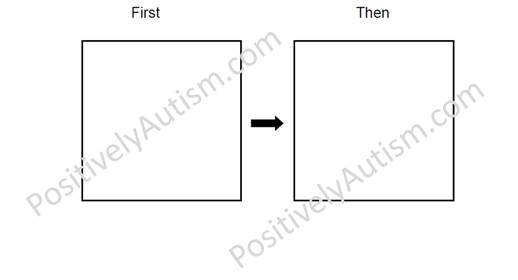
Introduction to Applied Behavior Analysis (ABA) Online Tutorial |
||





|
Visual Supports In her book, "Ten Things Every Child with Autism Wishes You Knew," Ellen Notbohm describes her opinion of what a child with autism might say about the need for visual supports: “I need to see something to learn it, not just hear it. Words are frequently like steam to me; I know they are there but they evaporate before I have a chance to make sense of them. I need more time to process information than typical children. Information delivered in words comes and goes in an instant…when information in presented to me visually, it can stay in front of me for as long as it takes to decode.” One of the primary ways that I use visual supports is through schedules. A schedule provides a visual representation of events that will happen, so that a child with autism knows what to expect. There are many options for using a schedule, and a few examples are provided below. You can also make a computer-based schedule in PowerPoint or another program. Additionally, schedule apps for tablets and smart phones are becoming increasingly available.  When first starting to teach the concept of schedules, it may be helpful to use a first-then chart. A first-then chart is a good beginning schedule. It is simple, showing only a few activities. It is especially helpful for encouraging a child to do something he doesn't particularly enjoy. You might put a picture of a matching activity first, then a picture of the child's tablet. This shows the child that he will do the matching activity, then get to play on the tablet. 
First-Then Charts from Positively Autism Since a child may not understand what the chart means at first, you can start with a very easy "first." For example, you can put a picture of a child clapping his hands on the "first" box (IF clapping hands is a familiar/easy task for the child) and a fun game in the "then" box. You can then show the child the picture, put down the schedule and say, "Clap your hands." When he claps his hands, say, "Good job, now we can play the game" while showing him the game picture on the schedule. Once the child gets the idea of using the first-then chart, you can add longer activities to the "first" box. You can also add more "first" boxes before the last "then" box. Once you child is successful with this type of schedule, you can begin to gradually work toward one of the more lengthy and complex schedules pictured above. A child with more verbal language comprehension may be able to start with a more complex schedule when provided an explanation for how the schedule works. This can help relive student anxiety about upcoming events and increase compliance when transitioning between activities. Next --> Transition Warnings We are a participant in the Amazon Services LLC Associates Program, an affiliate advertising program designed to provide a means for us to earn fees by linking to Amazon.com and affiliated sites. |
|